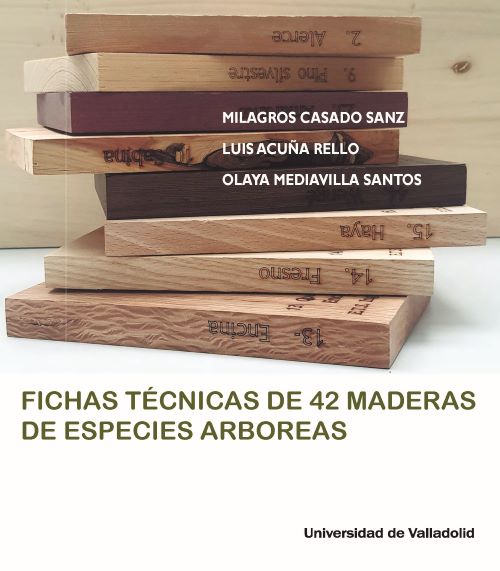Technical documents for 43 woods of tree species
Keywords:
wood technology, TreesSynopsis
In June 2021, under the direction of Rosario Sierra de Grado, the exhibition Science in Action: Forests and Climate Emergency began with reference FCT-20-15850, financed by the Ministry of Science and Innovation in the Call for aid to promote scientific, technological and innovation culture.
Forests provide us with a wide range of products and services that are essential for the bioeconomy and to satisfy basic needs. For example, they provide us with wood used as construction material and in the manufacture of furniture, pulp and paper for napkins and toilet paper, they provide biomass and biofuels as sources of energy, and food such as; wild fruits, nuts, mushrooms, aromatic and medicinal plants. Without forgetting, also, that forests are home to a great diversity of flora and fauna.
However, it is important to insist on sustainable forest management, since overexploitation of forest resources can have negative effects on biodiversity, ecosystem services and the fragile environmental balance. Therefore, it is necessary to promote forest management practices that preserve the health and productivity of forests in the long term.
This volume contains the technical sheets of 43 species of commercial wood that accompany the xylotheca prepared by the Wood Laboratory of the E.T.S of Agricultural Engineering (Palencia) in collaboration with the IES Ribera de Castilla (Valladolid). Each card includes an image of the tree, its natural distribution worldwide, the scientific name and vernacular names, its macroscopic appearance, some of its properties: physical, mechanical and technological, and its applications.
Society increasingly demands more sustainable, ecological, natural, renewable, recyclable products, etc. and wood brings together all those qualities. In the field of construction, wood and its derivatives have numerous advantages over other traditional materials such as brick and concrete, since they are CO2 sinks throughout the life cycle of the home, they do not require water consumption during construction. construction phase, allow much faster construction on site thanks to prefabricated elements, require less energy consumption, allow the creation of healthy living spaces, respectful of the environment and of great natural beauty.

Downloads
Published
Categories
Right Holder
EDICIONES UNIVERSIDAD DE VALLADOLID 2024License

This work is licensed under a Creative Commons Attribution-NonCommercial-NoDerivatives 4.0 International License.

